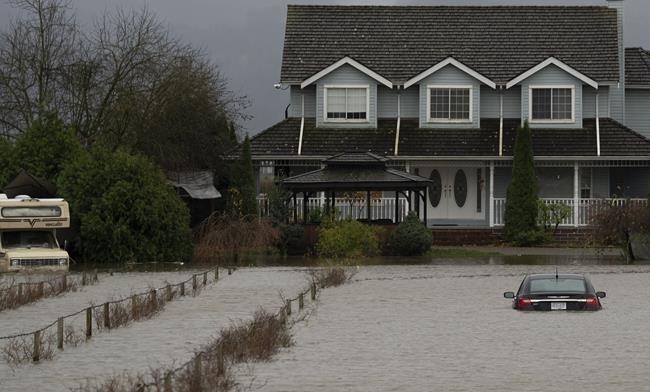Record rainfall in British Columbia has flooded communities and washed away roads in what experts say is part of an increasingly costly trend that both homeowners and renters need to better prepare for.
"Effectively what we’re seeing in B.C. is another manifestation of climate change in action," said Blair Feltmate, head of the Intact Centre on Climate Adaptation at the University of Waterloo.
"Going forward, precipitation events are going to be more extreme in nature — and by association, more costly.”
Flood damage is already by far the most expensive type of extreme weather risk facing Canadians, particularly basement flooding which costs on average $43,000 to repair.
To avoid costly damage, Feltmate said people should try to better understand the risks, consider specific insurance coverage, and take measures to protect their homes from potential flooding.
While those living close to water are generally at higher risk, he said it's something everyone should be aware of because increasingly intense rainfall can create problems far from where it's expected.
“Someone should not think that just because they're not close to standing or running water or on a floodplain that they’re free of risk. They’re not.”
To better understand the risks to a home, Feltmate suggests checking in with a local conservation authority to access the most updated flood risk maps.
Flood insurance from events such as high rainfall or overflowing rivers, which insurers only began to offer in 2015 after the destructive Calgary flood, is becoming an increasingly important consideration.
Linda Dolan, owner of Alport Insurance Agencies Inc. in Port Alberni, B.C., says many people are adding flood insurance to their coverage when they can, but that companies have been selective about offering it.
She said premiums can be high depending on where people live, generally ranging from $200 to $1,200, while coverage can be limited for those in higher risk areas and unavailable at all for some.
"The unfortunate thing with flood insurance, is if you’re in a high-risk zone, it’s either not available to you or the price is so high that it’s not affordable."
She said that coverage for landslides and ocean swells, which could also see increases from extreme weather, are still generally not covered by any policies.
Just under half of B.C. policyholders have flood coverage, slightly below the national average, said Aaron Sutherland, vice-president of Western and Pacific at the Insurance Bureau of Canada, leaving many exposed to costs in the flooding.
"That does mean we have a significant number of folks who are going to be uninsured for these events, and that is going to make the recovery all the more challenging.”
The record rainfalls in B.C. has forced Merritt and Abbotsford to issue evacuation notices, while several other cities like Princeton and Chilliwack have also seen flooding, and landslides have shut down major highways.
Environment Canada said 20 rainfall records were set Sunday as an "atmospheric river" rolled across southern B.C., including to 174 millimetres of rain in one day in Hope.
It's far too early to estimate costs, but Sutherland said the financial toll is likely to be extensive.
“It’s clear that this is a very very significant event."
Payouts in general have already been on the rise, going from what was hundreds of millions a year in the past to over a billion dollars a year since 2009, and over two billion dollars in the last few years.
“These trends are going only in one direction, and that is up, and as much as we think about climate as a future threat, we need to recognize the new weather reality that we face in this country," said Sutherland.
Meanwhile about five per cent of homeowners in B.C. are not eligible for flood insurance at all because of high risks, which is why the industry is working with the federal government on a program to provide some form of affordable coverage for everyone.
A federal task force on flood insurance and relocation that's looking into this issue among others is expected to report findings next spring.
Whether someone has coverage or not, Feltmate said it's important to prepare a home by taking measures such as checking the sump pump works and installing backup power for it, putting plastic covers over window wells, and making sure the grading of the home directs water away from the building.
But much like measures at the community level, where berms, collection ponds, land restrictions and permeable surfaces could significantly reduce risks, he said people aren't doing enough yet to prepare.
“The problem is we’re not operationalizing these measures quickly enough...it's a lack of a sense of urgency to need to act."
This report by The Canadian Press was first published Nov. 16, 2021.
Ian Bickis, The Canadian Press



